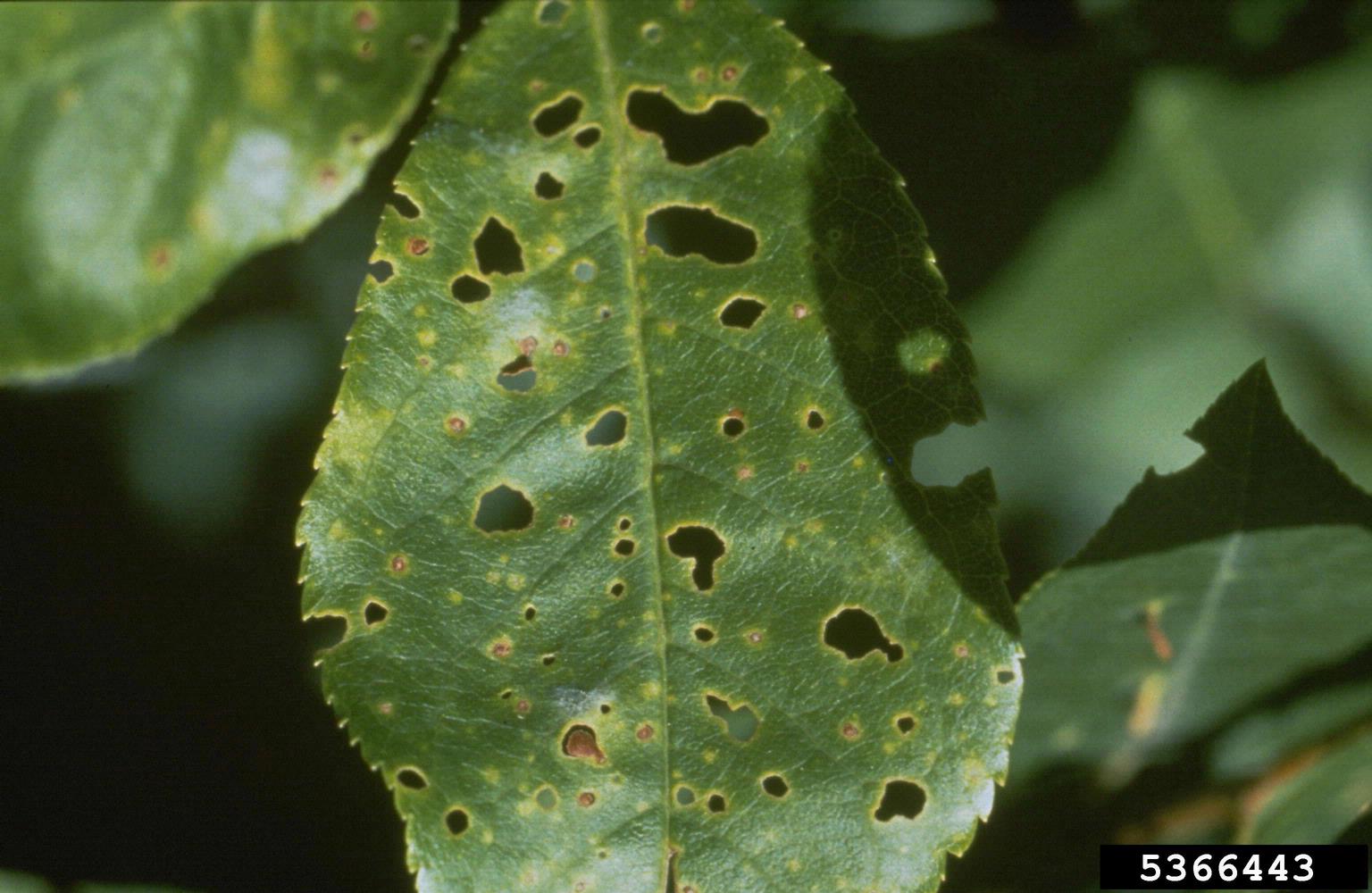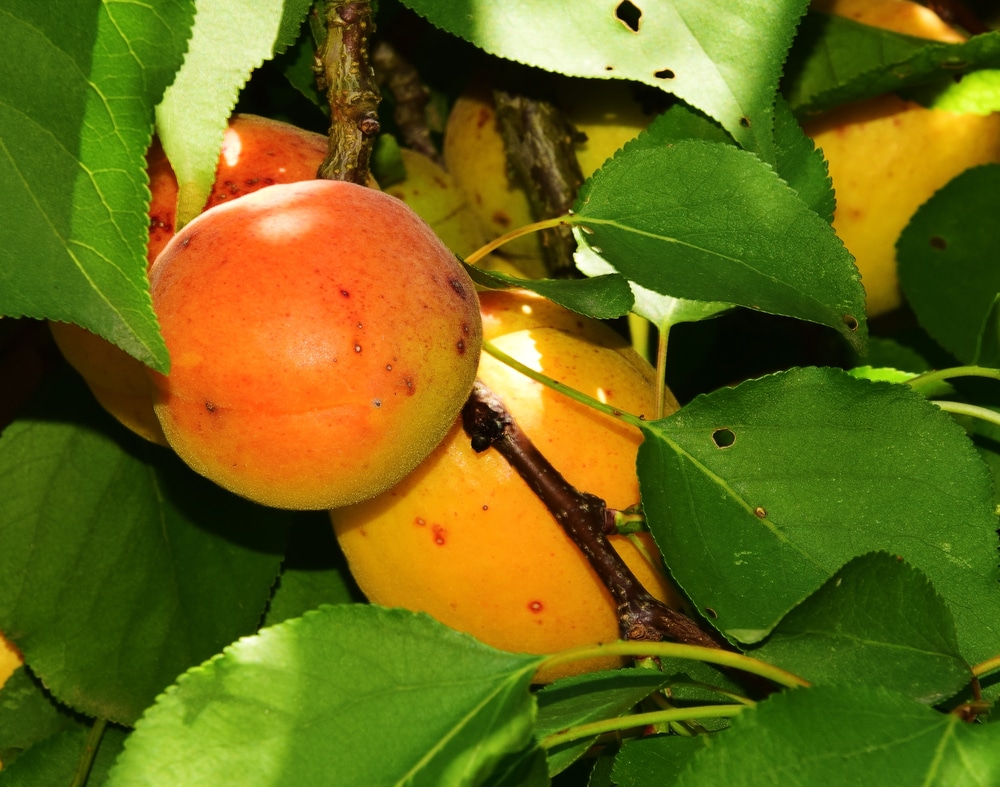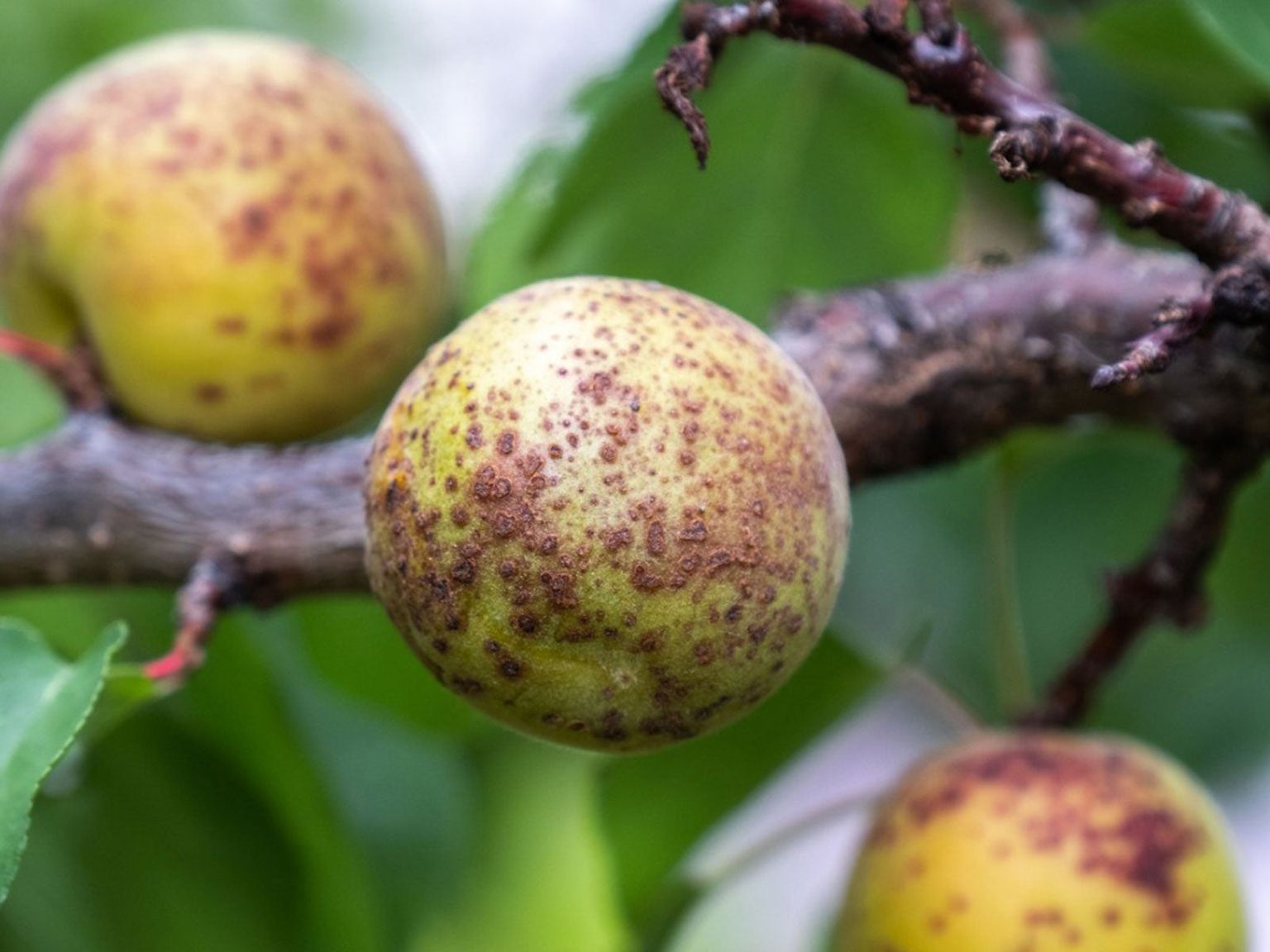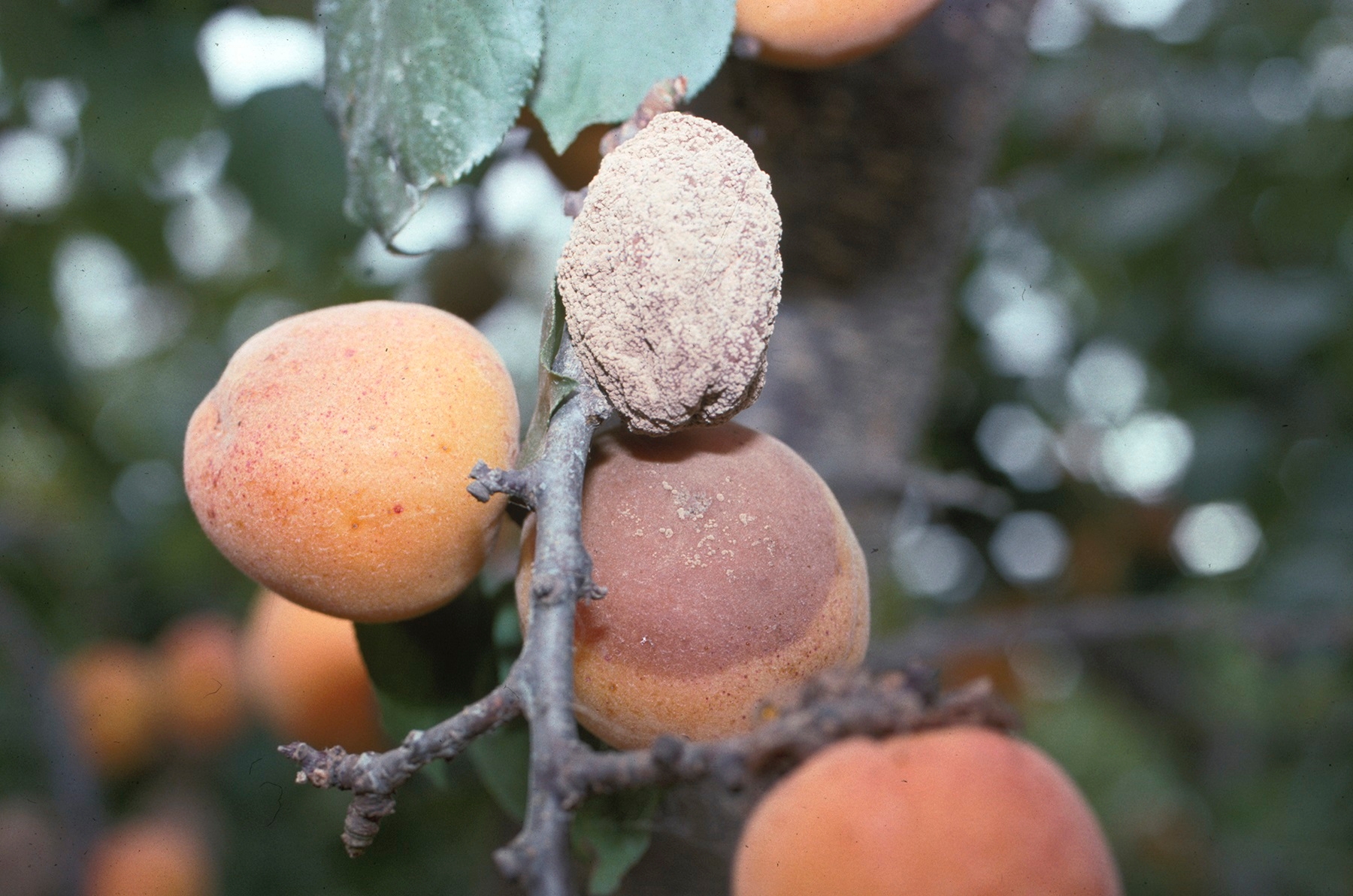
Apricot Tree Diseases How to Identify, Treat, and Prevent Apricot Tree Diseases Minneopa Orchards
Most common apricot tree diseases and parasites. Regular spraying of Bordeaux mixture or natural fermented tea as soon as buds open will help control disease. After that, keep spraying until about two weeks before harvesting the apricots. This is a sure way to avoid many fungal diseases. A beautiful summer harvest can then be expected.

Treating Apricot Shot Hole Disease Learn About Apricot Shot Hole Fungus
To prevent ripe fruit rot, fungicides such as fenbuconazole, pyraclostrobin, or fenhexamid are frequently applied to fruits. Small, circular, purple spots on the leaves of apricots may be shot hole disease. However, infected leaves hardly ever die or fall from the tree. Instead, the spots occasionally dry out and fall through.

Apricot Diseases Pictures The American Mastermind
Like many other fruit trees, Apricot trees are a risky investment. Growing one requires time and patience, but results don't always depend on expectations. Common Apricot tree problems The Apricot tree is losing its leaves. Severe shot hole . Shot hole disease causes holes in leaves, which eventually fall off the tree in spring.

Apricot Tree Diseases How to Identify, Treat, and Prevent Apricot Tree Diseases Minneopa Orchards
Apricot tree diseases can end years of work in just a few days, but most diseases are recognizable, treatable, and sometimes preventable. Common Apricot tree problems The Apricot tree is losing its leaves. Severe shot hole . Shot hole disease causes holes in leaves, which eventually fall off the tree in spring.

Apricot tree diseases 🍑 🦠 Recognizing signs and finding remedies
There's nothing like eating a fresh, ripe apricot straight from the tree. Gardeners invest years in bringing this pivotal moment to fruition, nurturing their apricot trees and fighting off the diseases and pests that can hamper their apricot-growing efforts. There are many types of pests on apricot trees, but most can be controlled without using potentially dangerous insecticides.

Apricot Tree Diseases How to Identify, Treat, and Prevent Apricot Tree Diseases Minneopa Orchards
Apricot Shot Hole Control. Treating apricot shot hole disease once it has become advanced is difficult. The best measures begin with prevention. The disease is most common in wet conditions, so making sure trees are well spaced for airflow is crucial, as is regular apricot pruning to allow for circulation between branches. Avoid irrigation that.

Apricot tree diseases 🍑 🦠 Recognizing signs and finding remedies
Common Types of Apricot Disease. There are many types of apricot disease, though most are caused by the usual suspects - bacteria or fungus. Here are some of the most common diseases of apricot trees: Bacterial Canker. Among the most frustrating of apricot problems, bacterial canker causes the formation of dark, sunken sores at the base of buds.

Apricot Diseases Pictures The American Mastermind
Common apricot tree diseases and their symptoms. Some of the most common apricot tree diseases include brown rot, Armillaria root rot, powdery mildew, Verticillium wilt, Eutypa dieback, and shot hole disease. Brown rot is a fungal disease that affects the fruit of the apricot tree. The symptoms include brown or black spots on the fruit, as well.

Apricot Tree Diseases How to Identify, Treat, and Prevent Apricot Tree Diseases Minneopa Orchards
Identification tip: Trees with Phytophthora crown and root rot develop sparse, pale foliage. Ripe fruit rot Identification tip: Tan spore masses form on apricots with ripe fruit rot. Shot hole disease fruit and leaf lesions Identification tip: Fruit lesions are light brown with dark purple margins and usually cluster on the fruit's upper.

Common Apricot Problems How To Identify Apricot Tree Diseases
Fungal diseases. Alternaria spot and fruit rot. Alternaria alternata. Armillaria crown and root rot (shoestring crown and root rot) Armillaria mellea. Rhizomorpha subcorticalis [anamorph] Brown rot blossom and twig blight and fruit rot. Monilinia fructicola. Monilinia laxa.

Apricot Tree Showing Signs of Brown Rot HOrT COCOUC Master Gardener Program of Contra Costa
Symptoms in Apricot Trees. This disease can take hold without your realizing it. You might first notice the infection if your apricot becomes infected after it is 5 years old. If so, your apricot tree will have small leaves and poor terminal growth until the unthinkable happens - it suddenly collapses in the summer..

Apricot Tree Diseases How to Identify, Treat, and Prevent Apricot Tree Diseases Minneopa Orchards
The apricot fruit is a drupe that appears similar to a peach with skin that can be smooth or covered in tiny hairs depending on the variety and a single seed enclosed within a protective outer shell (stone). Apricot trees can reach 8-12 m (26-39 ft) and can live anywhere between 20 and 40 years depending on variety and growth conditions.

Rotten Apricot on the Fruit Tree, Monilia Laxa Infestation Plant Disease Stock Image Image of
Phony Peach (bacterium - Xylella fastidiosa ): This disease does not cause rapid death of trees but results in reduced growth and fruit size. Twigs on diseased trees have shortened internodes and increased lateral branching. The general appearance is a dwarfed, compact growth pattern with dark green foliage.

Apricot treatments, most common diseases and pests of this fruit tree, Nexles
Pruning is a critical part of apricot tree care. Apricot Tree Pests and Diseases. The last thing any gardener wants is for their fruit trees to succumb to pests or diseases. Fortunately, if caught early on, most of the conditions that commonly affect apricot trees can be dealt with, and a full recovery can be made. Keeping an eye out for pests.

Apricot treatments, most common diseases and pests of this fruit tree, Nexles
Apricot Tree Diseases. Apricot Harvest and Storage. Pruning Apricot Fruit Trees. Body.. Bearing apricot trees, whether trained to the central-leader system or the open-center system, require a little more annual pruning than standard apple trees, but less than peaches require. Most of the fruits are borne on short spurs that are productive.

Apricot treatments, most common diseases and pests of this fruit tree, Nexles
Apricot Tree Diseases Bacterial Canker. Caused by Pseudomonas syringae - a bacterium that is spread by splashing rain or irrigation. Cool, wet weather and late frosts after blooming favor disease development. Symptoms: Appears on branches and trunk as gummy cankers and water-soaked areas in spring. Brown leaf spots become shotholes in foliage.